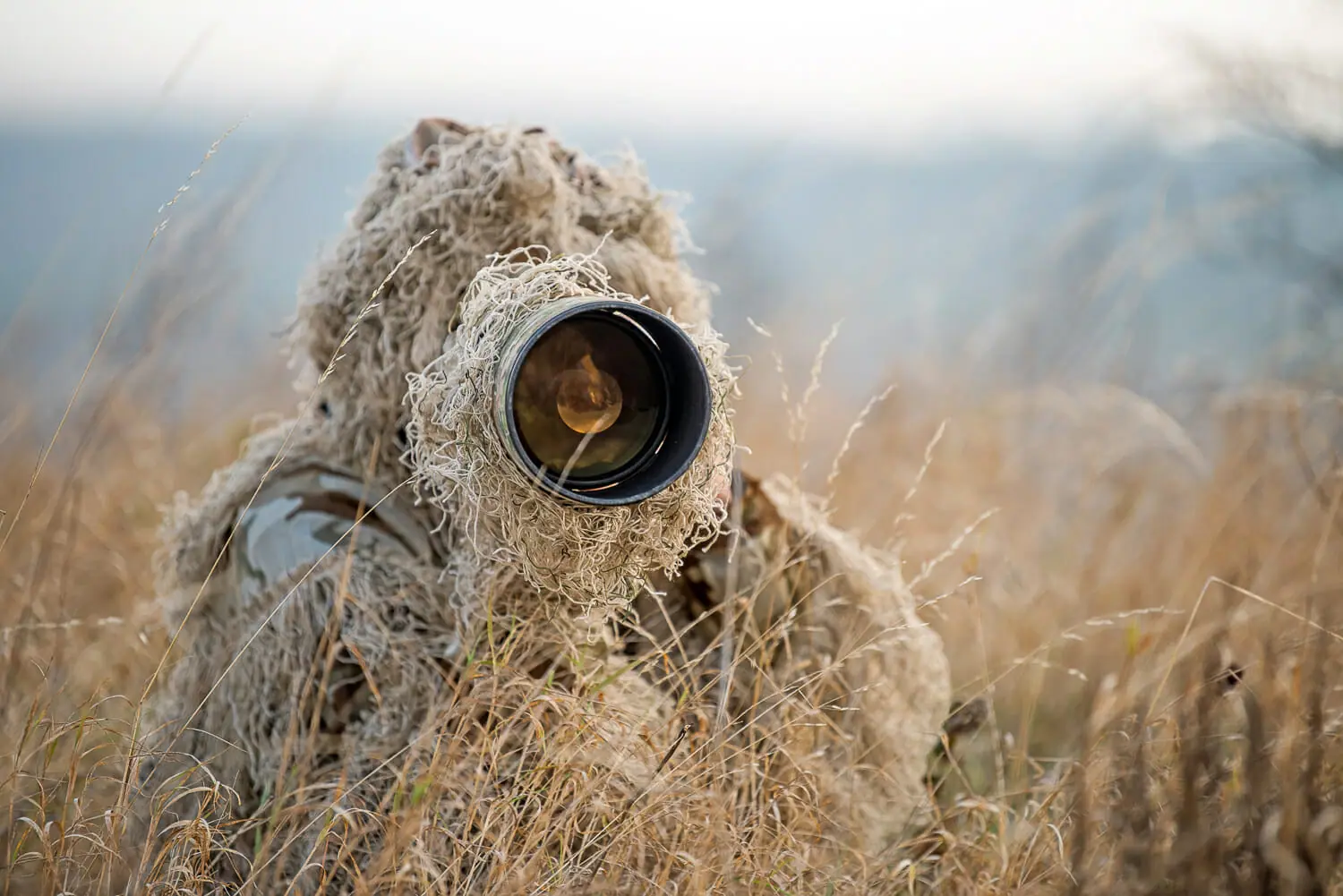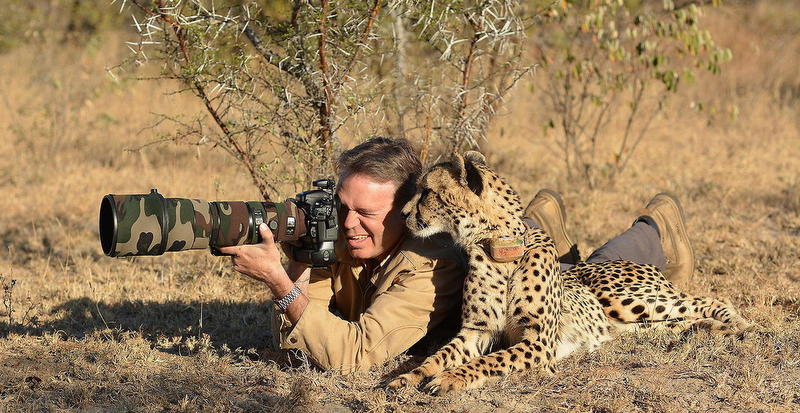How to become a wildlife photographer ( The Ultimate Guide)

How to become a wildlife photographer ( The Ultimate Guide): If you have a passion for photography and love to travel, you may want to consider a career as a wildlife photographer. These specialized photographers take pictures of plants and animals in various environments for artistic, journalistic and business purposes.
Read Also: How to become a concert photographer (All you need to know)
Understanding more about the path to this niche area of photography could help you determine if it’s the right role for you.
The Ultimate Guide on How to become a wildlife photographer
1. Study up on photography
Prior to focusing on wildlife photography, you must have a thorough understanding of fundamental photography concepts. Acquire proficiency in handling gadgets including as cameras, lighting fixtures, microphones, and editing software. To learn the fundamentals of using a camera, think about enrolling in a photography course at a community college, art school, or centre. Another option is to enrol in live workshops or online classes taught by seasoned photographers who can help you learn both fundamental and sophisticated skills like lighting, composition, and camera settings.
Read Also: How To Get Photography Clients (13 Ways to grow your business)
Also, You can educate yourself on your own schedule by reading books and blogs about photography and attending online tutorials, some of which concentrate on approaches for wildlife photography in particular. You might also think about reaching out to local pros in photography to see if you can help them.You may gain priceless experience and understanding of the photographic trade from this. If you know of any wildlife or animal photographers in your region, go after them.

2. Get equipment for wildlife photography
Since many wildlife photographers operate as independent contractors, they typically provide their own equipment, especially when they first enter the field. A wildlife photographer needs, at the very least, a high-end camera with strong low-light performance, so that you can take pictures in low light. They also need a rapid shutter speed and auto-focus, because animals move swiftly.
Read Also: How to Find the Best Stock Photos for Your Blog
- Acquire a telephoto lens, memory cards, zooms, an external flash to add fill light to subjects, and a sturdy camera bag to preserve your gear during bad weather. To set up your photo and wait for an animal to enter the frame, a solid, portable tripod can be helpful.
3. Practise snapping pictures outside
Take pictures outside in your local region to hone your wildlife photography skills. You can learn how to snap photos outside in various weather conditions, such as wind, sunshine, or precipitation, by following this approach. You can practise outdoor photography by taking pictures of local natural plants and animals, landscapes or pet portraits outside.
Read Also: How to grow your social media following (Amazing Tips)
4. Examine animals and their behavior
To be a successful wildlife photographer, familiarize yourself with some of the local species. Discovering these animals’ temperament, favored weather, feeding habits, and habitat will help you find them, stay safe around them, and be considerate of their requirements.
- You may start learning about other kinds of animals as your business grows. For instance, taking pictures of aquatic life demands specialized abilities, and studying the migratory patterns of birds can teach you where to look for particular species at different times of the year.
- See animals in their native habitats and record their behaviours, relationships, and movement patterns by visiting national parks or wildlife sanctuaries.
Read Also: How To Write A Short Story For Beginners
- Take part in workshops or guided tours with knowledgeable wildlife photographers or local guides to learn how to spot animal indications such as scat and tracks. Use binoculars or a telephoto lens, observe animals from a safe distance, and exercise patience and composure.
- To document your observations and ideas, keep a notebook or logbook. Additionally, always respect the animals’ space and refrain from upsetting them.

5. Expand your portfolio
Make a photo portfolio to display your work. If you want to become a wildlife photographer, you can decide to focus mostly on nature photography, which includes taking pictures of landscapes, animals, and plants. Employers can gain insight into your photographic style and recognise you as a professional in the field.
Having a portfolio handy can help you land a job as a wildlife photographer since potential employers will be more inclined to hire you if they see some of your previous work.
Read Also: How to Curate an Aesthetic Instagram Feed (All you need to know)
6. Make connections with other photographers
Make connections with other photographers in the field. For a photographer, creating a network may be quite beneficial because many get referrals from previous clients or from other photographers. In order to increase the number of businesses that are aware of your work, you may also network with individuals at businesses who hire photographers. It makes sense to go after art directors and creative directors because they are frequently looking for talent in photography.
7. Decide on a rate
Knowing what to charge is essential for photographers. Find out what the going rates are for the kind of work you want and in your location. For a given assignment, wildlife photographers may charge a fixed fee, or they may bill by the hour for their skills and time. If a business intends to use their photos for commercial endeavours, they might potentially bargain for a usage charge.
Read Also: How To Build Meaningful Professional Connections
Additionally, the pay for each assignment may vary. For instance, charging less for an hour-long outdoor photographic session with your neighbor’s pet might make more sense financially than charging more for a weekend excursion to capture the changing foliage in a local forest for a travel magazine.

8. Apply for jobs as a freelancer
It could be beneficial for you to work as a wildlife photographer on a few freelancing projects. A photographer can build their portfolio and break into the market by working as a freelancer, where they have the freedom to turn down jobs and seize every chance to network with other professionals in the field. You might be able to develop positive working relationships with clients as a result of this.
Read Also: How to deal with Graphic Design Clients (All you need to Know)
Once you’ve completed a few freelance wildlife photography assignments, you may utilise the portfolio you establish to inform your future projects and determine whether you want to pursue freelancing work indefinitely or if you’d rather work for a firm or publication.
Conclusion
To become a wildlife photographer, one must hone photography techniques, acquire high-quality gear, learn about animal behaviour, exercise patience, assemble a portfolio, connect with other photographers, and think about attending workshops or formal schooling for specialised expertise. Seize the chance to gain practical field experience, and keep honing your skills to capture unique animal moments.
FAQs & Answers
1. Which camera gear is necessary for taking wildlife photos?
For photographing faraway animals, you’ll need a sturdy tripod, a telephoto lens (300mm or longer), a dependable DSLR or mirrorless camera, and extras like lens filters and a camera bag.
2. How can I get close to wild animals to take pictures of them without upsetting them?
Keep a safe distance, move gently and silently, blend in with the surroundings with blinds or camouflage, and avoid making direct eye contact with the animals. Honour their habitat and natural behaviour.
3. How can a novice wildlife photographer develop a portfolio?
Take pictures of the local wildlife, visit neighbouring nature areas, and exhibit a range of species and behaviours. Choose your greatest work to build a strong portfolio because quality counts more than quantity.




